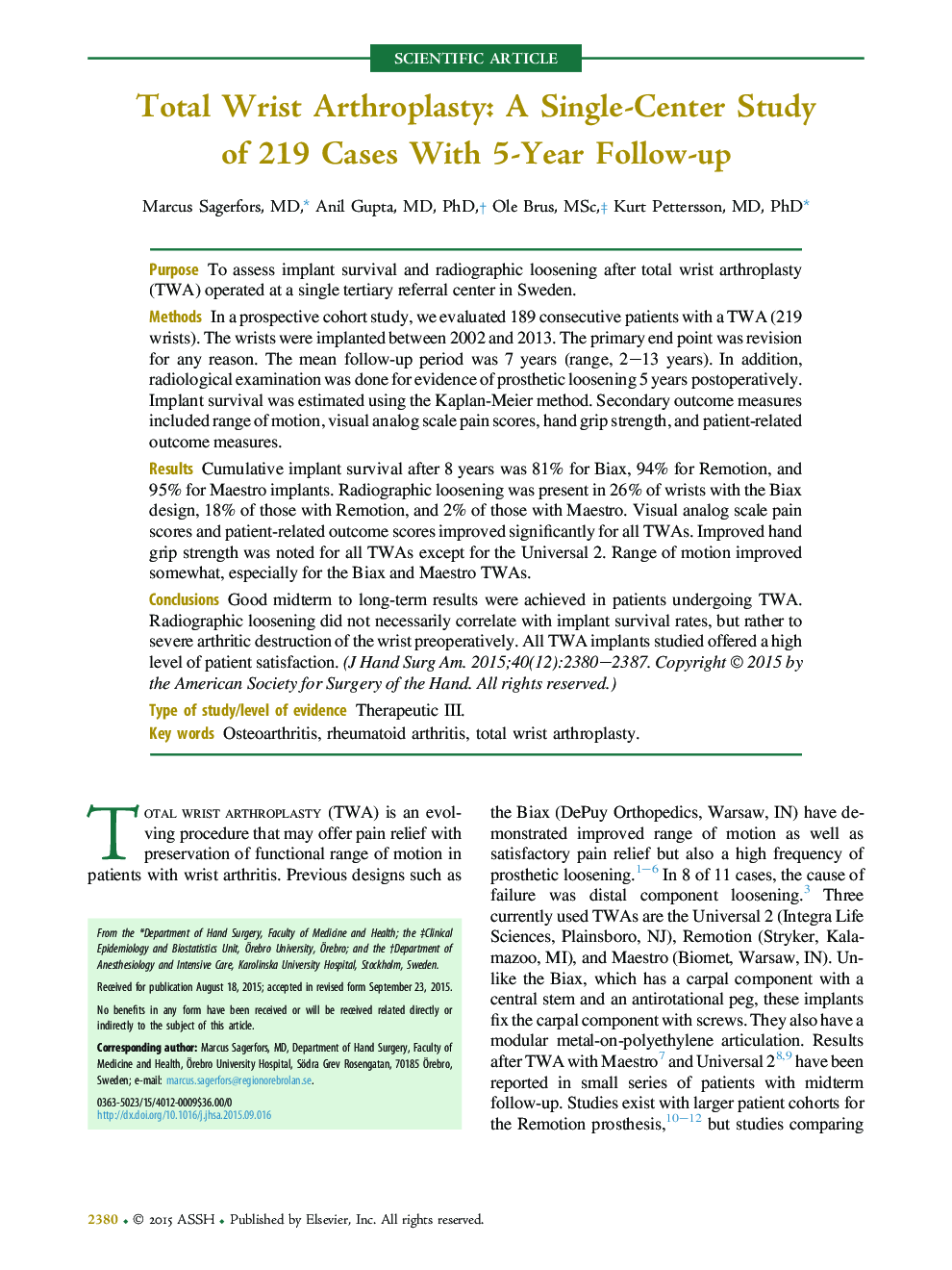| Article ID | Journal | Published Year | Pages | File Type |
|---|---|---|---|---|
| 4066093 | The Journal of Hand Surgery | 2015 | 8 Pages |
PurposeTo assess implant survival and radiographic loosening after total wrist arthroplasty (TWA) operated at a single tertiary referral center in Sweden.MethodsIn a prospective cohort study, we evaluated 189 consecutive patients with a TWA (219 wrists). The wrists were implanted between 2002 and 2013. The primary end point was revision for any reason. The mean follow-up period was 7 years (range, 2–13 years). In addition, radiological examination was done for evidence of prosthetic loosening 5 years postoperatively. Implant survival was estimated using the Kaplan-Meier method. Secondary outcome measures included range of motion, visual analog scale pain scores, hand grip strength, and patient-related outcome measures.ResultsCumulative implant survival after 8 years was 81% for Biax, 94% for Remotion, and 95% for Maestro implants. Radiographic loosening was present in 26% of wrists with the Biax design, 18% of those with Remotion, and 2% of those with Maestro. Visual analog scale pain scores and patient-related outcome scores improved significantly for all TWAs. Improved hand grip strength was noted for all TWAs except for the Universal 2. Range of motion improved somewhat, especially for the Biax and Maestro TWAs.ConclusionsGood midterm to long-term results were achieved in patients undergoing TWA. Radiographic loosening did not necessarily correlate with implant survival rates, but rather to severe arthritic destruction of the wrist preoperatively. All TWA implants studied offered a high level of patient satisfaction.Type of study/level of evidenceTherapeutic III.
